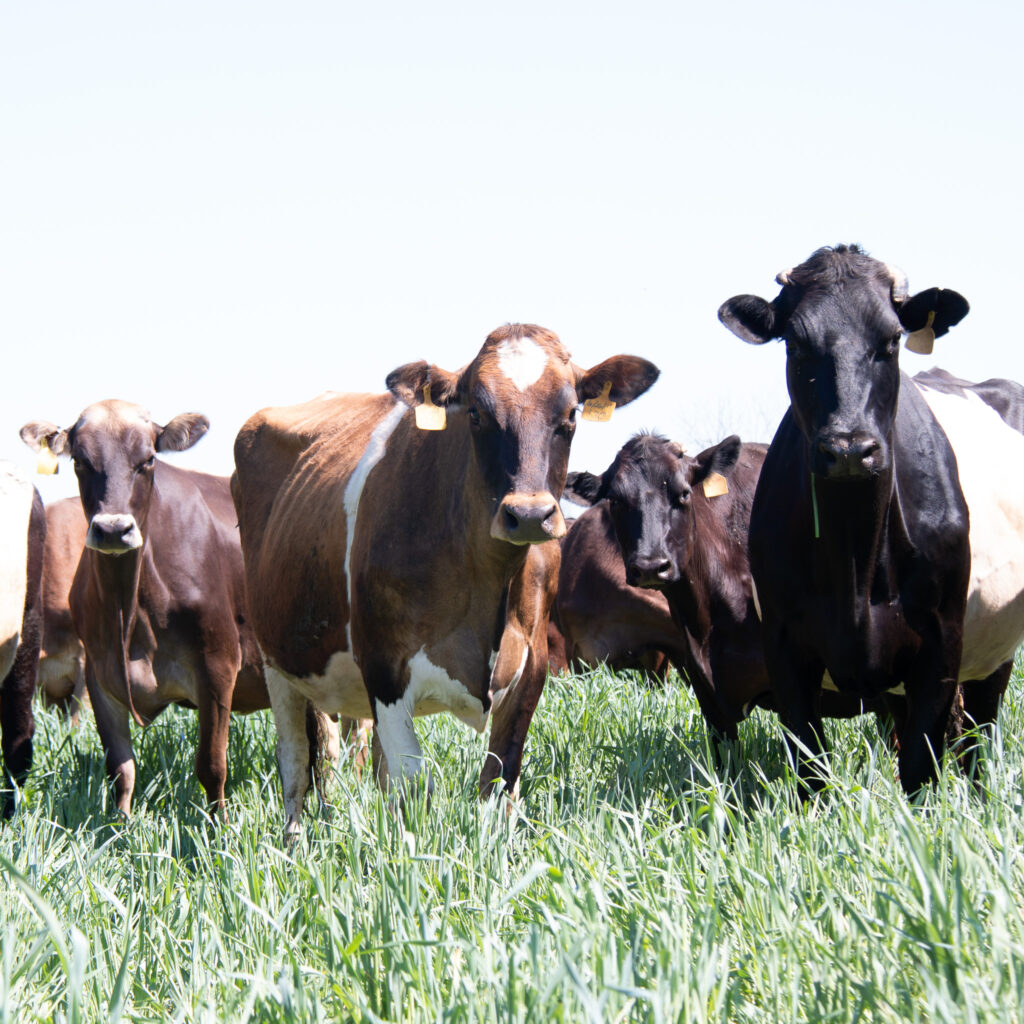
WhatAre the Reasons for Lactose Intolerance?
We hear it over and over. “Struggling with Irritable Bowel Syndrome”. “I have lactose intolerance”. “I use milk substitute for my child”. Milk allergy seems to be a problem. And it is. But how did our forefathers live with drinking milk? They never saw the dairy cases in supermarkets filled with pseudo milk alternatives. Names of milk substitute choices such as oat milk, hemp milk, cashew milk, and almond milk did not exist. But do these milks really hold similar value to real milk? Could an infant live and grow one of these so called milks? Or perhaps this setting presents a not-so-long future health disaster for humanity? Or what about A2A2 cow milk protein that calls consumers to give it a try?
A Different Dairy Industry
The dairy industry in America presents something different than that of 250 years ago. Back then the milk was real milk. The cows grazed on fresh grasses. then they came into the barn for milking. then again returned back out into the pastures to rest and graze some more. Or if it was too cold, they would enjoy laying on the deep bedded straw in the warmer barn with the other livestock. Mass concentration was unheard of.
And the milk from the cow was simply a few gallons. Did they ever dreamed of milking over 23 gallons of milk from 1 cow in one day? With a natural diet cows produced a nutrient dense food that parents could count on for nourishing the family. They depended on milk as a source of vitamins and minerals for their own health as well.
But do you realize what has happened to the volume of milk a cow produces? In 1950, the average milk cow in America produced about 2 gallons per day (5,300 lbs. annually). Now recent reporting says that in 2018, average per cow annual milk production stands at 23,149 lbs. If a cow is milking for 10 months out of that year that would give us the amount of almost 9 gallons a day. This is an increase of 12.6% increase since 2009. But compare this 9 gallons of milk with that of 2 gallons per day in 1950! Which would you choose? Is there going to be any less nutritional value in the 9 gallons versus the 2 gallons? Is the cow actually able to consume enough more well balanced food to equally increase the output of quality milk?
Astounding Accomplishments Via Genetic Selective Breeding
Now think with me just a bit more about massive volumes of milk. In 2017 a prize-winning cow named Selz-Pralle Aftershock 3918 produced the amazing amount of 78,170 lbs. of milk! A world record! That is 9,089 gallons of milk in one year from 1 cow! Amazing? Wonderful? Depends on your perspective.
But consider just a bit more. Now if she was milking for 365 days that would have been 24.9 gallons per day. But most cows only produce milk around 10 months. And then they have a dry period (6-8 weeks). They rest their bodies in preparation for giving birth to another calf. And so, she was producing milk for 300 days. That would calculate that she produced an average of 30- gallons of milk per day!
Great Success or a Deep Problem?
Selective breeding. That has produced Poodles and Great Danes. We have chickens that grow so fast their legs cannot hold up their body weight within just a few weeks. And we have cows that can produce buckets of milk in 1 day! Yes selective breeding may seem to have yielded great gains but . . . Really?
Did you know that the Holstein cows hold such a small pool of genes that it is thought that if they are subject to possible extinction? And this now inspires some researchers to consider how they can add more unrelated animals into the gene pools without comprising the attributes of massive milk volumes.
In fact, only 2 bulls from the 1960’s hold the majority role of ancestors to the nine million Holstein cows in America.
Some dairymen today may not remember as well as their fathers did of the great heroic name of Round Oak Rag Apple Elevation, sired by a bull that was highly inbred. And this famous bull known as Elevation, had a maternal grand father with a serious genetic mutation causing bovine LAD, or leukocyte adhesion deficiency. This discovery in 1989 shows the seriousness of selective gene pooling back in the 50’s and 60’s up until now.
Nor are they well acquainted with the once considered great sire Pawnee Farm Arlinda Chief .
The Tragic Success of Arlinda Chief
Yes, they considered him a great success. He had 1,600 daughters, 500,000 granddaughters and over 2 million great granddaughters. But wait. The dairy industry lost over 420 million dollars due to a deadly mutation from this bull. More than 500,000 calves died unborn in the womb. This created a great loss to the farmers; destructive to the cow health and production of milk. And then additionally, there were serious complications of conceptions within this genetic line that eventually lead to some investigation. Studies in 2011 uncovered the apoptosis peptide activating factor 1 gene, or APAF1 for short. This mutation involved a shortened the fatty acid chain of the protein.
APAF1 Mutation Or A1 Mutation?
As I was researching for this article, I kept wondering is there is an association between these 2 mutations? I could not seem to find clear cut details on line. And so I contacted Keith Woodford. He responded:
“I can now confirm that these two issues are unrelated. Separate mutaitons with separate effects. However, the Apaf1 mutation does illustrate how a ‘bad gene’ can profilerate very quickly as a result of intensive selection and inbreeding. Pawnee Farm Arlinda Chief had oustanding production characteristics and his lineage can be found in most Friesian cattle. The negative effect through a higher than normal rate of abortions was not picked up for some 40 years.
People often ask how can the A1 variant of beta-casein has become so common. The answer is in the same way as the APaf1 variant became common despite powerful negative effects, but with those negative effects not being recognised.
Once humans get involved with animal breeding using techniques such as A1 and embryo transplants, there is scope for big improvements, but when mistakes are made they can also be very big mistakes.”
I wish to sincerely thank Keith for his timely response and with clarity. You can learn more about his studies on the subject at: https://keithwoodford.wordpress.com/category/a1-and-a2-milk/
Unforeseen Crisis from Propagation of A1 Mutation?
Certainly artificial insemination in the dairy created a very widespread powerful monopoly from a few specific genes. And thereby the A1 protein problem amplified milk intolerances. The A1 mutation developed sometime. Perhaps it happened many years ago. But propagated widely in the last number of years. And this through a focus on the volume of milk production, not the quality. The outcome? A restricted gene pool. And the wrong genes. But no one saw the problem.
I wonder, has the dairy industry considered the financial losses due to the A1 mutation? can we rightly blame this mutation for the destruction of fluid milk sales? And if A2 milk remained our food source, we would have paid so much less for medical therapy. And had so much less pain!
A1 Milk Produces Opioid BCM7 Peptide
Opioid Crisis! We hear that today often. And now you can understand there may be opioid peptides in your milk! Opioid peptides have effects on mood, emotion, control of pain and appetite. Another reason to happily pay the extra to get A2A2 milk! it might just help to keep you emotionally balanced.
“Evidence suggests the peptide BCM 7 is a risk factor for development of human diseases, including increased risk of type 1 diabetes and cardiovascular diseases.”
Lactose Intolerance or Protein Problem?
Milk allergy involves a negative response from one or more proteins. the lactose then may seem to be the problem. but underlying it all most likely lies the A1 protein problem. Many folks have misdiagnosed the problem to be the lactose instead of understanding the protein issue.
Is A2A2 Cow Milk Protein the Answer for SIDS (Sudden Infant Death Syndrome)?
ARC Journal of Nutrition and Growth present the possibility of the A1 milk mutation as a contributing factor in SIDS.
Keith Woodford, an authoritarian on the subject, says: “A1 beta-casein has been implicated in a range of human health conditions, many of which have an auto-immune element to them. The health conditions include Type 1 diabetes, heart disease, mental health conditions, behaviour, child development, sudden infant death syndrome, and milk intolerances.”
Consider trying raw milk from A2A2 cows instead of looking any further for a milk substitute. Or you may want to find an organic A2A2 milk.
Is IBS (Irritable Bowel Syndrome) from A1 Milk?
Studies suggest A1 Beta Casein (A1 milk) causes gut inflammation and immune reactions. Many folks have chose a milk substitute due to digestive issue they deal with. Perhaps real milk (with A2A2 milk protein) might be part of the solution and not the problem. But A1 milk brings so much confusion to the table!
A1 milk produces BMC-7, a protein fragrant. Then this broken protein fatty acid chain slows the flow of the digestive tract and consequently causes gut inflammation.
A2A2 protein milk has a stronger and longer chain fatty acid which holds together during the digestion process. Studies have found folks do not react negatively to A2A2 protein milk as likely as to the A1 milk.
For many years, healthy children regularly drank milk each morning to prepare them for studies and activities at school. Perhaps A2A2 milk protein holds an answer to our questions of increasing childhood maladies? Forget the milk substitute. Get real milk!
Some folks have found kefir to be a healing cleansing tool to free them from some of these damages from A1 milk protein.
What is the difference between A2A2 Milk and A2 Milk?
A2A2 means the parents of the cow producing this milk both had the A2 genes. No A1 gene mutations.
Milk Substitute for Milk Allergy — Future Health Complications?
Milk, a staple for infants. It has a complete makeup of nutrients for a body to grow and develop. But think of a milk substitute? And for a baby formula? What does it offer compared to the real thing? Did you ever consider what would happened to a body who only consumed almonds? Or cashews? Or soy beans? I think we all know the answer without even needing to do much research.
And so what do we think when we drink milk? It is healthy for us, right? And then consider a subtle proposition to change that food. Replace real milk with a so-called milk, a milk substitute. But it lacks the natural whole nutrients of real milk. Will we not have a serious lack of some key elements that milk used to provide for us? Perhaps you should consider nutrients of A2A2 milk proteins for your future instead of a milk substitute? I think you should at least consider it.

